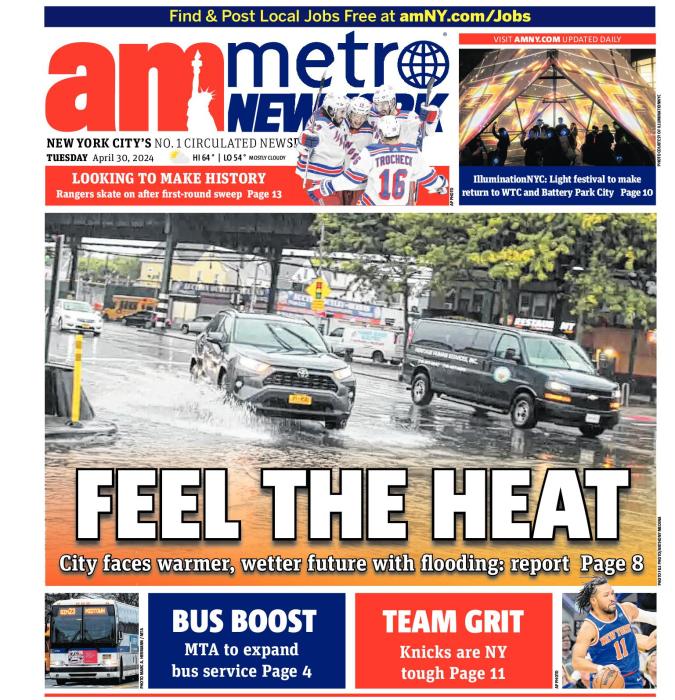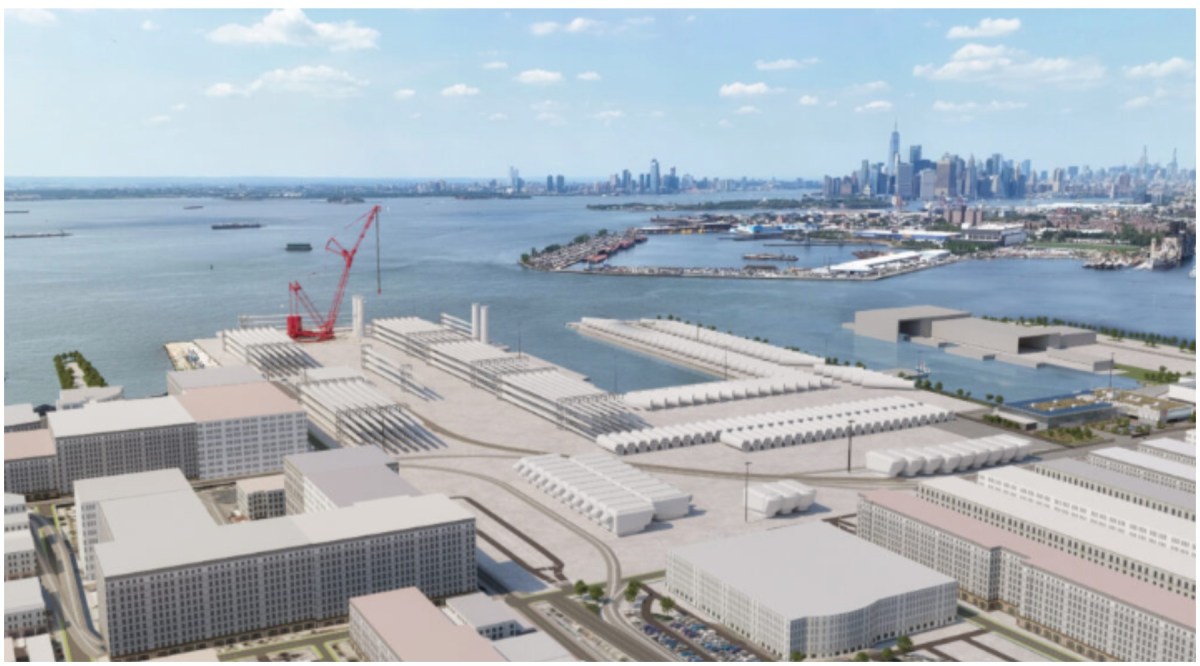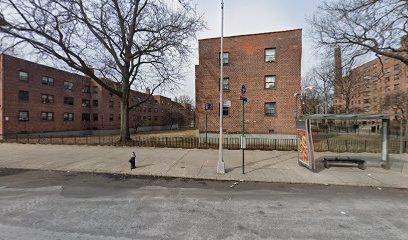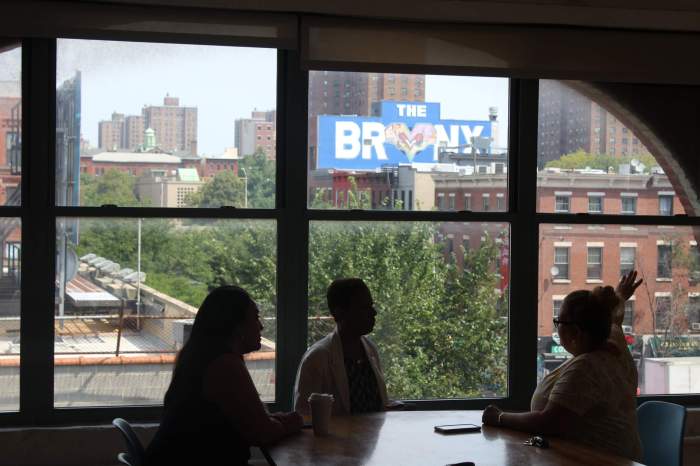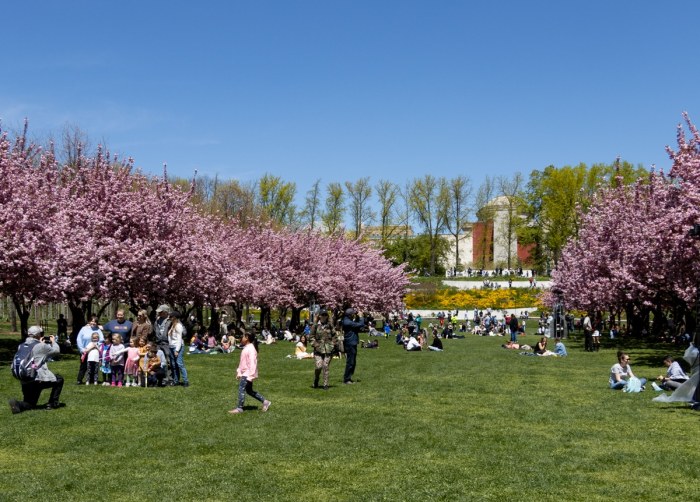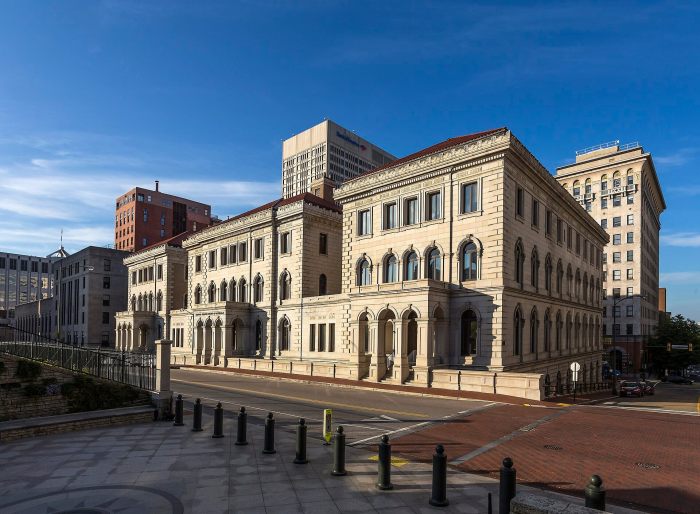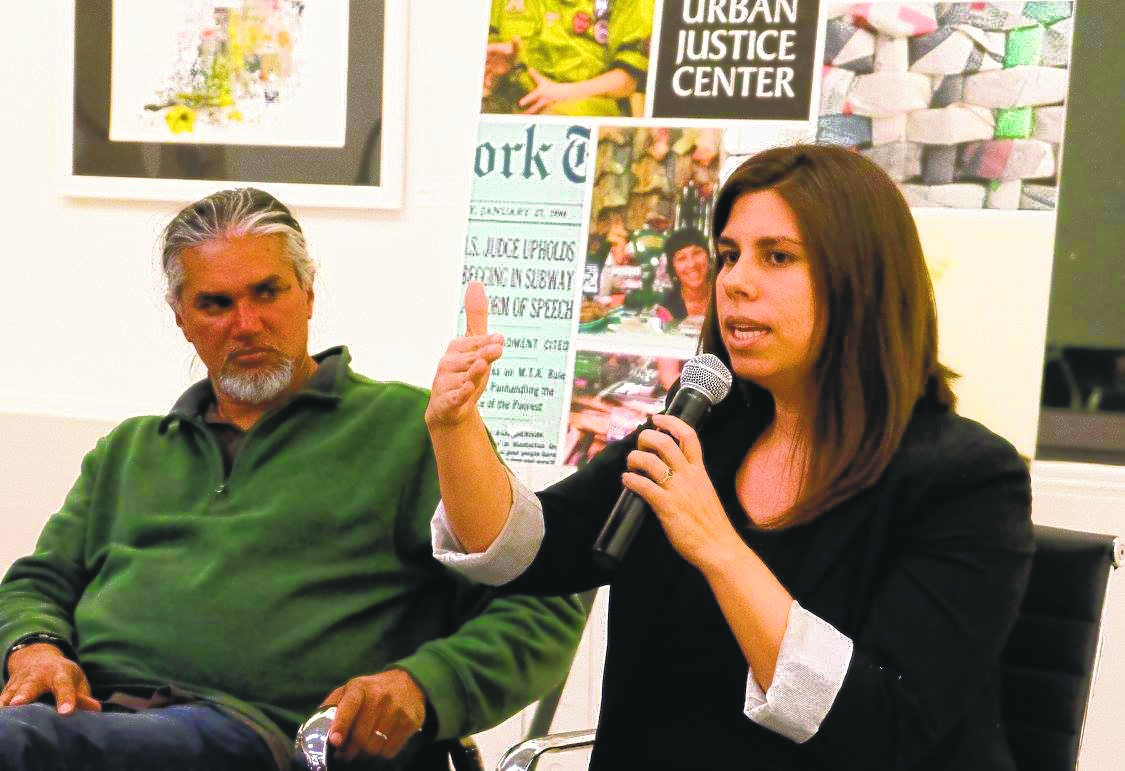
BY LINCOLN ANDERSON | “They talk about building a wall,” said Melissa Mark-Viverito, the New York City Council speaker. “We’re going to build a wall of resistance — and create a safe space for everyone.”
If one sentence summed up a recent forum held by the Urban Justice Center on the idea of “sanctuary cities” — and how New York is taking actions to increasingly bolster itself as one — that was it.
The event, hosted by U.J.C.’s Young Professionals Board, was held at the Rector St. office of the progressive nonprofit on the evening of Mon., March 13, a few hours before the big snowstorm blew into town.
Joining Mark-Viverito on the expert panel were Ravi Ragbir, executive director of the New Sanctuary Coalition of New York City; Lourdes Rosado, the civil-rights bureau chief at the New York State Attorney General’s Office; and Danielle Alvarado, an immigrant-rights attorney with the U.J.C.’s Community Development Project.
Though “sanctuary city” has become an accepted part of our vocabulary — though not by Donald Trump — it’s a relatively new term, having evolved, at least in the case of New York City, only over the past 15 years or so. But the concept has obviously taken on far greater significance now with the new president vowing to deport millions of undocumented immigrants — particularly those he vaguely disparages as “the bad ones.”
In New York, the nation’s largest city, with 8.5 million people, Trump’s threats have created a deep chill. Immigrants make up 40 percent of the population here — that’s the biggest amount of immigrants, both by percentage and sheer numbers, of any city in the world.
“We are obviously in an awful climate right now,” said Mark-Viverito. “There’s a lot of fear.”
The leader of the City Council for the past three years, Mark-Viverito said she does consider New York to be a de facto sanctuary city. However, as the panel’s moderator, reporter Jeff Mays, formerly of DNAinfo, and the other panelists agreed, technically speaking, there is no official definition of what a sanctuary city actually is.
Nevertheless, the effort to create this refuge has been vigorous and is ongoing. It’s been multipronged, involving executive orders passed by former Mayor Mike Bloomberg, Mayor Bill de Blasio’s signing of the “ICE Detainer Bill,” changes in police enforcement to minimize immigrants’ contact with the criminal-justice system, and an effort to keep Immigrations and Customs Enforcement officers out of Rikers Island.
Things started under Bloomberg, who passed executive orders generally barring city employees — other than law enforcement — from inquiring about people’s immigration status, plus mandating that no one be denied city services based on their residency status.
Also based on an executive order by Bloomberg, police, as well, are not supposed to inquire about a person’s immigration status “unless investigating illegal activity other than mere status as an undocumented alien.”
“It shall be the policy of the Police Department not to inquire about the immigration status of crime victims, witnesses or others who call or approach the police seeking assistance,” one of Bloomberg’s several orders stated.
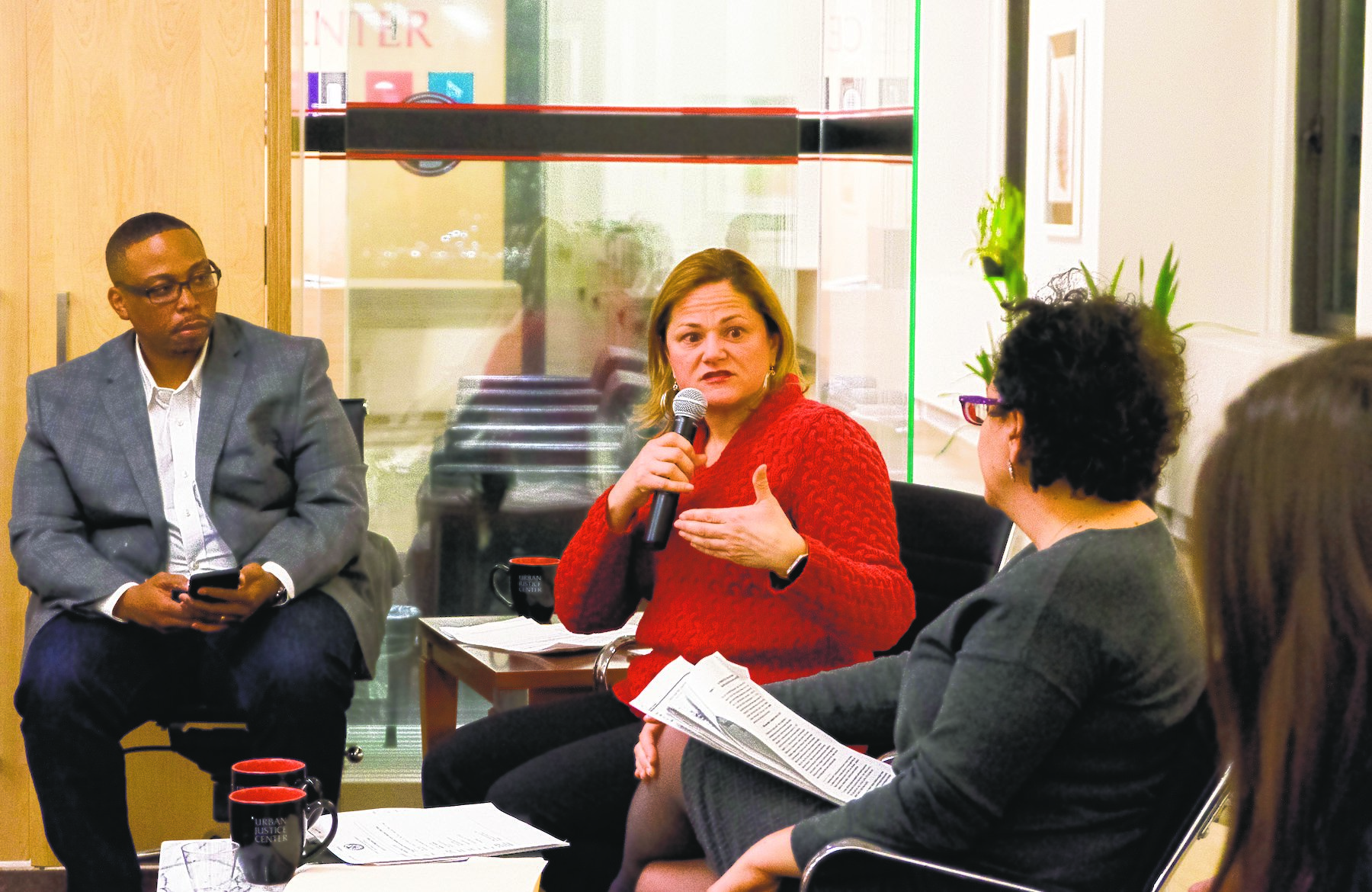
Speakers on the panel noted that it’s very important for immigrants to feel safe approaching police — both for immigrants’ own safety and for the public’s safety, in general.
As the Council speaker said, “We don’t want an immigrant who witnesses a shooting not to call the police.”
In addition, the “ICE Detainer Bill,” signed into law by de Blasio in late 2014, dramatically reduced New York City’s cooperation with the feds regarding ICE deportations. Basically, the city said it would not turn over information on low-level offenders with immigration issues, and would not detain them for an additional 48 hours after their cases were resolved — even if the charges have been dropped or dismissed — so that ICE agents could come get them.
“Let’s remember,” Mark-Viverito stressed, “if you’re being held at Rikers, you’re accused of a crime – you’re not convicted of a crime. ICE had records of those rosters. We were colluding and feeding into this broken deportation system, letting ICE know about people accused of a crime.”
Also, in May 2016, the City Council passed the Criminal Justice Reform Act, which creates “more-proportional penalties” for certain low-level, nonviolent offenses, including having an open container of alcohol in public, being in a park after hours, littering, public urination and unreasonable noise. These cases are now being sent to civil court rather than criminal court — so the individuals do not receive a permanent criminal record.
In addition, the City Council is working with the New York Police Department to modify its Transit Bureau policies, notably by having police just issue a summons rather than making an arrest for turnstile-jumping. Again, this keeps the individual out of the criminal-justice system, and he or she does not get fingerprinted.
As Mark-Viverito summed it up, “We’re really pushing the envelope as a city, in terms of protecting immigrants.”
She added that New York City leaders will meet with those from other self-declared sanctuary cities around the country this month to discuss how they can better work together to combat deportations.
Trump, of course, has said that sanctuary cities are violating the law by shielding illegal aliens — and has threatened to punish these metropolises by withholding federal funding. But Rosado, from the state A.G.’s office, said there is leeway in immigration-enforcement regulations.
“There are places where it’s voluntary or not to follow federal law,” she noted.
In her introduction of Ragbir, Mark-Viverito noted that he had “legally immigrated” here from Trinidad. But Ragbir took exception to that.
“Let’s stop using qualifying words,” he said. “You said I legally immigrated here. I migrated to the U.S.,” he stressed. “Migration is a natural process.”
Ragbir noted he has “to be careful” what he says in public since he has to “check in” again with ICE officials next month. He formerly worked for a mortgage lender and was convicted in 2001 of wire fraud — and thus faces deportation. He was under house arrest for three years, served two-and-a-half years in prison, and then two more years in immigrant detention, according to an interview earlier this month on WBAI’s “Democracy Now!” His green card remains subject to review.
According to The Observer, he was ordered to be deported in 2006, but received a stay of removal in 2011, extending to 2018. Even though he is married to a U.S. citizen, the government refuses to normalize his status.
In the meantime, Ragbir has been leading the city’s interfaith New Sanctuary Coalition, which is based out of Judson Memorial Church, on Washington Square South, in the Village.
The passage of the ICE Detainer Bill was a major victory for the coalition.
“In 2014, we literally got ICE out of Rikers Island,” he said. “Actually getting them out of that space was huge.”
Ragbir offered some other advice for how to thwart ICE: basically, make the agents’ job as difficult as possible. He referred to last month’s ICE raids in New York City, which included the arrest of at least two men on Staten Island for violent crimes — although immigrant advocates say more people were actually busted in that borough than ICE is admitting.
“They went to Staten Island,” Ragbir said. “Can you guess why they went there? They were going where the community would welcome them.”
Yet, ICE agents still need a warrant to enter a home, he noted. So a good first step for protection is just to lock your door, he offered.
“If ICE comes into an area and everyone locks their door and no one is on the street — what happens? ICE becomes ineffective,” he stated.
Also, Ragbir advised that if people are “accosted by ICE,” they should just show their IDNYC — the new municipal ID card created by de Blasio — which is obtainable by anyone living in New York, regardless of immigration status.
“They will not know your status,” he said. “That was the idea of municipal ID… . And if you are bilingual, speak in Spanish,” he added.
Also, Ragbir suggested, as much as possible, people should flood ICE’s offices in a show of support whenever an immigrant convicted of a crime has to go for a check-in, as many — including Speaker Mark-Viverito — did for him at his check-in the previous week. Hundreds rallied outside the ICE office down by Foley Square when Ragbir went for his check-in.
“What if we had 600 people who showed up for every person who had a check-in with ICE?” he said.
Alvarado, of U.J.C., added that, even in a city like New York with all its protections for immigrants, more can still be done.
There is “room for growth,” she said, for people with more-serious criminal convictions.
“There are 170 offenses for which the city will let ICE know about the individuals,” she noted.
And low-level offenses can still pose a threat, too.
“The ‘Broken Windows’ policy disproportionately affects people of color and low-income people,” she noted of the Police Department’s policy of nabbing people for relatively minor offenses to try to keep down more-serious crime.
More to the point, referring to the country’s undocumented immigrants, she said, “Trump has made all 11 million people ‘illegal criminals.’ ”
“We’re seeing ICE undercovers at the courts, and that’s very disturbing,” she said.
Trying to restrict ICE from public areas in government buildings is another step the city is now contemplating, she said.
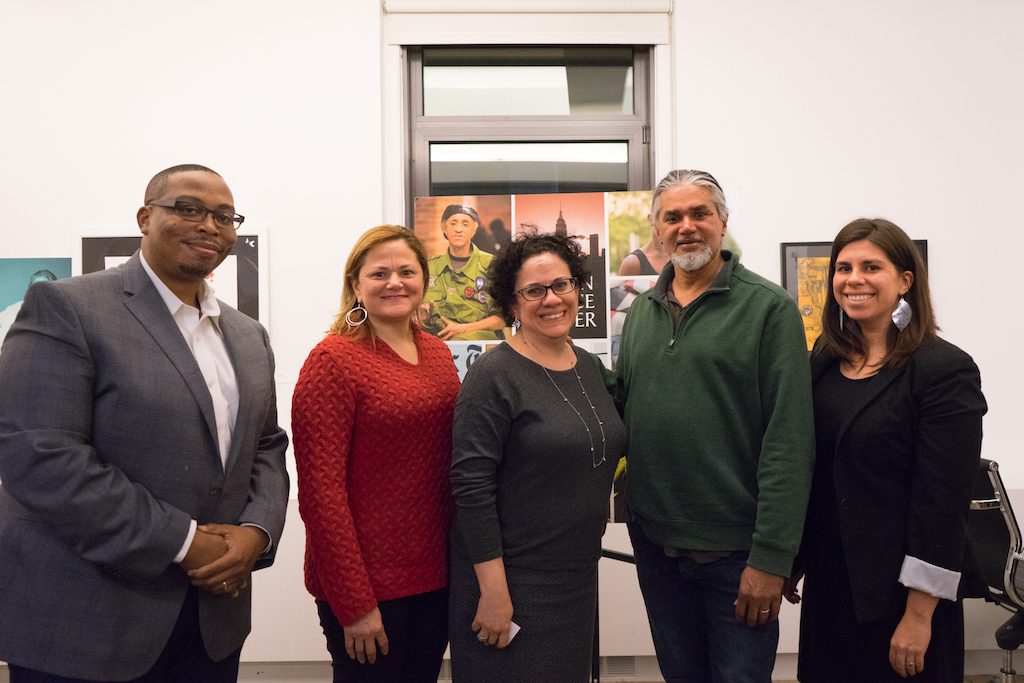
As for the president threatening to yank federal funding to punish sanctuary cities, Rosado, of the A.G.’s office, said there are limits.
“It’s very narrow what he can do,” she said. “He can’t take money from daycare, but he could take money from law enforcement — which would hurt law and order.”
Added Mark-Viverito, “Being rational is never a word you can apply to this administration or this individual.”
Meanwhile, New York City’s success disproves the rationale of Trump’s jihad against immigrants.
“All these policies to protect immigrants have made us a better city,” Mark-Viverito said. “We’re doing well economically, we are not less safe — and we have the data to prove it. What they are doing is clearly scapegoating,” she said of the Trump administration.
“They’re not talking about gun control,” she scoffed. “They’re afraid to go after the N.R.A. That’s what they’re doing to our Muslim brothers and sisters.
“We’re a viable, thriving immigrant city,” she declared. “They don’t want that to be the case.”
The Villager later asked Mark-Viverito about concerns by some police that not arresting people for turnstile-jumping or public urination means that sometimes a person packing a gun, for example, won’t get caught.
“It’s a negotiation,” she said, moving her hands up and down to indicate a need for balance.
As for his own situation, Ragbir said existing with the constant threat of deportation is draining.
“It’s like living in quicksand,” he said, “not knowing what will happen when you put your foot down.”
He added that, while he was under house arrest for three years, he was forced to wear a GPS ankle monitor, which never came off, and which he had to charge for three hours each night by hanging his foot over the edge of his bed.
“This quicksand we’re in, we were living in it even before ‘he who shall not be named,’ ” he said.
But he added that with the new administration, things have clearly gotten much worse.
“They have only one goal in mind,” he said, “ethnic cleansing.”
During a question-and-answer period, a woman in the audience who represents African street vendors said many of them are very afraid right now about getting arrested.
“Some of the bags that they are selling are fake,” she noted. “They’re worrying it could affect their immigration status.”
Trump — shamefully, many would say — likes to showcase family members of murder victims who were killed by illegal immigrants. But Ragbir, for one, argued against “setting lines,” offering that homicide shouldn’t always necessarily be a basis for deportation.
“Even murder — maybe we can find there was a mental illness in the situation,” he noted. “There are many things to consider.”
Similarly, Alvarado said, a criminal conviction shouldn’t automatically mean deportation.
“Why are people irredeemable?” she asked.
